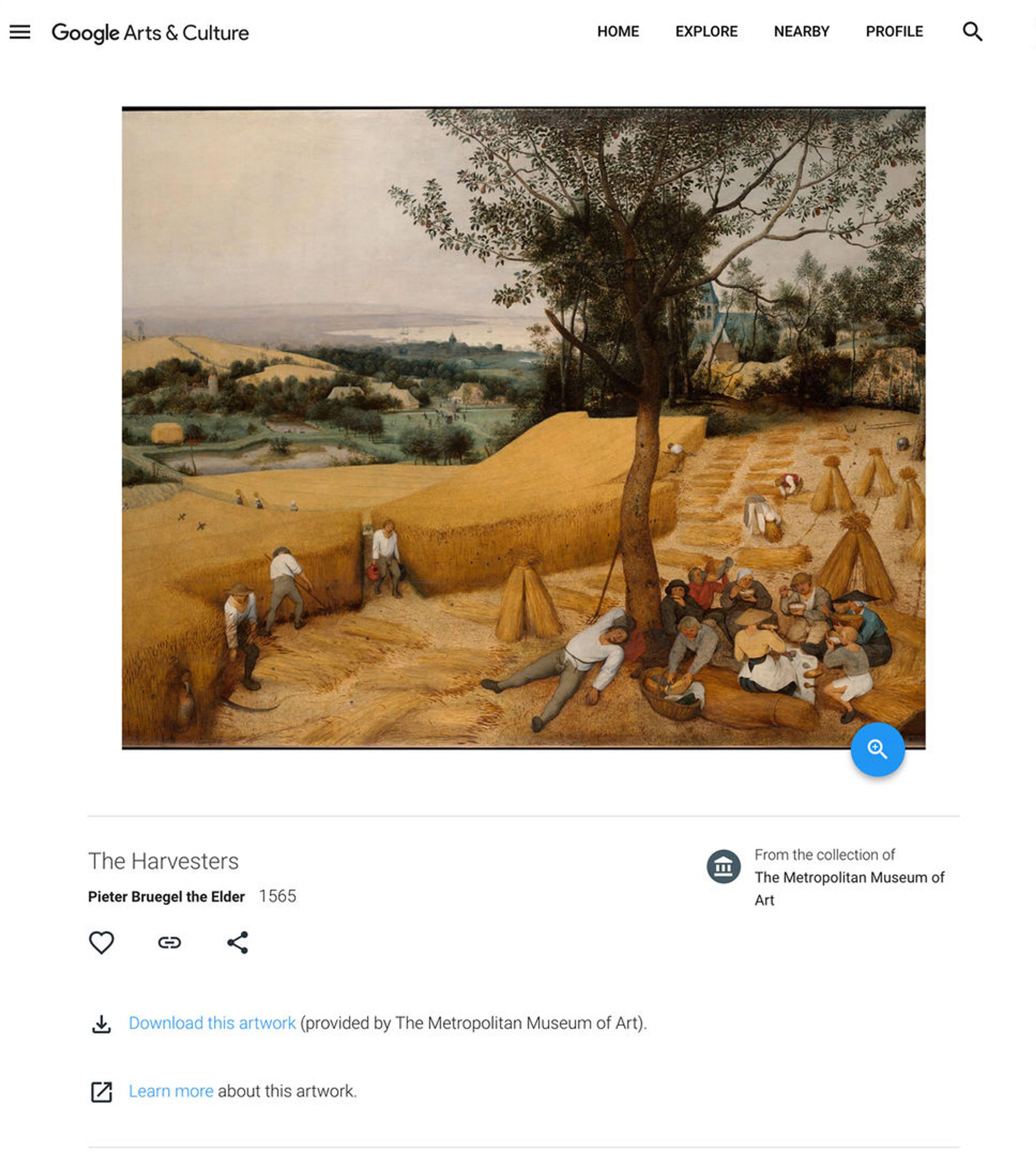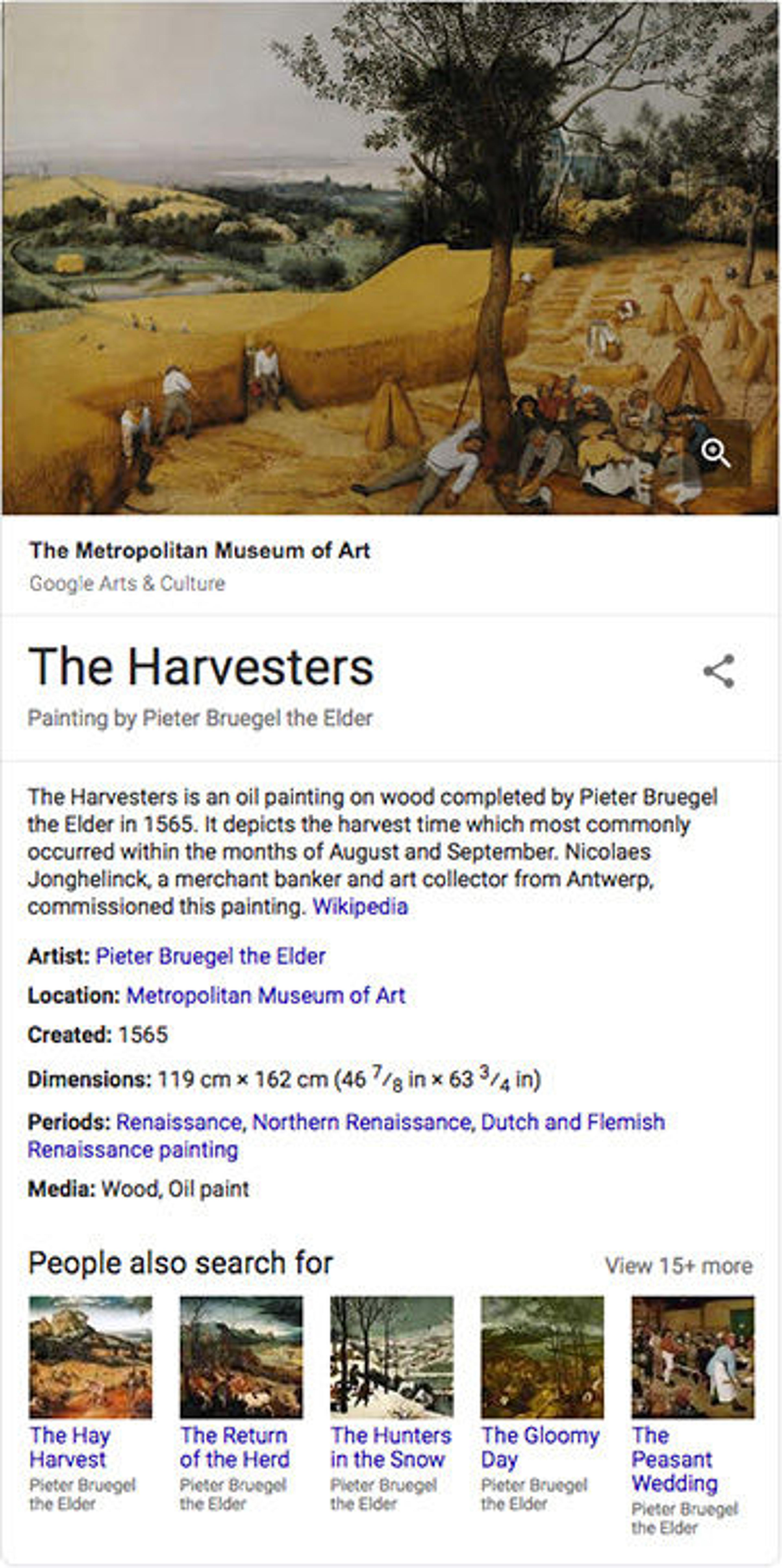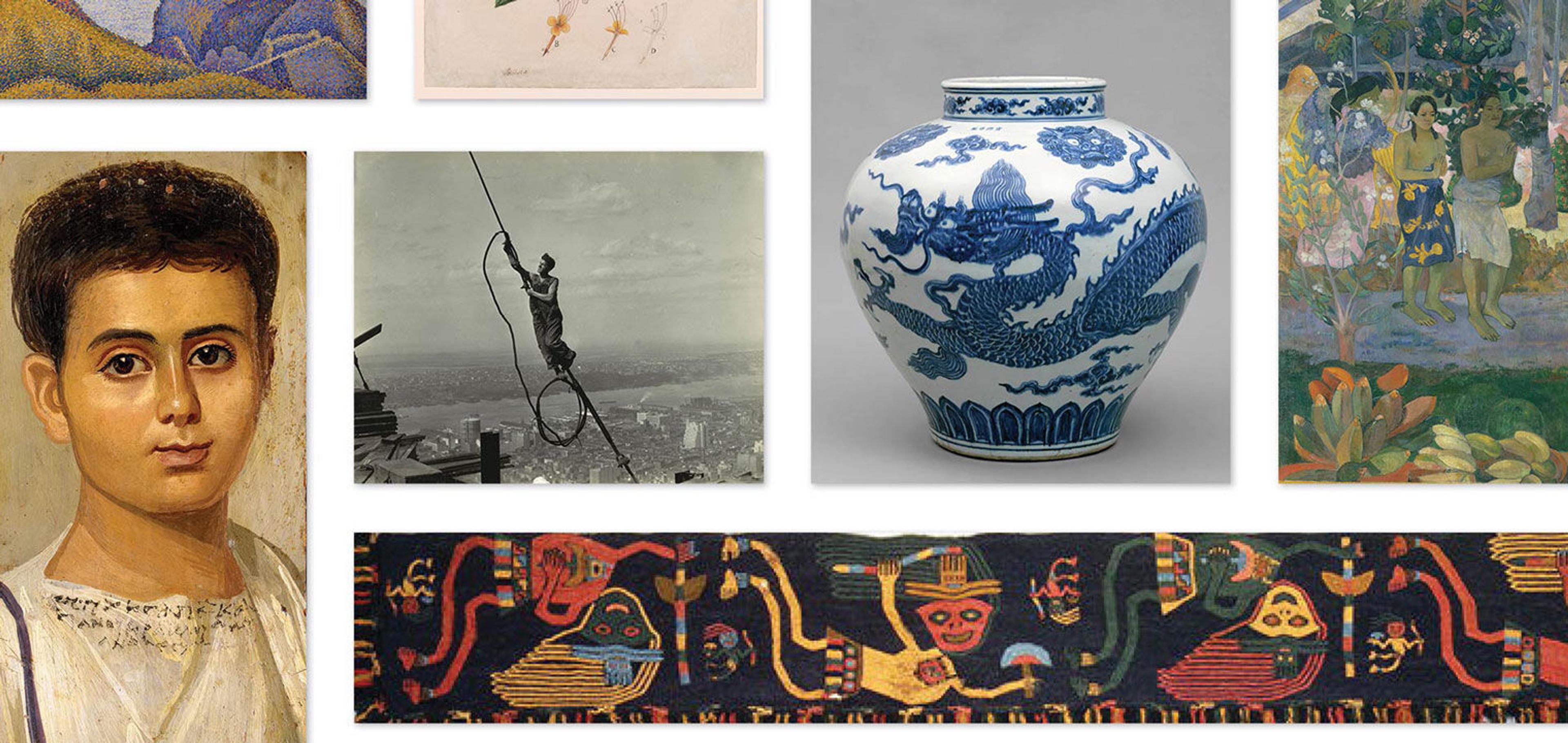Today, The Metropolitan Museum of Art launches a new public API for the collection. Through The Met Collection API, users can connect to a live feed of all Creative Commons Zero (CC0) data and 406,000 images from the The Met collection, all available for use without copyright or restriction. The Met Collection API is another foundational step in our Open Access program, helping make the Museum's collection one of the most accessible, discoverable, and useful on the internet. The Met Collection API is where all makers, creators, researchers, and dreamers can now connect to the most up-to-date data and images of artworks in The Met collection, representing five thousand years of human history.
This API is central to our ability to scale the success of our partnership with the Wikimedia community to other technology partners. Partnerships are now a core component of The Met's digital program, and represent an important shift in the Museum's approach to engaging online communities. Users are no longer required to come to our website to engage with the collection. We want The Met's incredible artworks to be discoverable and relevant on those websites where people already go for doses of creativity, knowledge, and ideas. This new API enables any third-party to sustainably integrate The Met collection into their website on scale. For detailed information about the API, visit The Met's page on GitHub.
An API Integration Between The Met and Google Arts & Culture
The first implementation of The Met Collection API is with our long-time partner Google. Together we have connected the Google Arts & Culture (GA&C) app and website to all the artworks in the collection through The Met Collection API. This is a first for Google Arts & Culture. With the flick of a switch—or a new hum of a server—this API connection has enabled us to scale The Met's presence on GA&C from the 757 artworks that we had manually uploaded over the past seven years to the 205,000 digitized, public-domain artworks in the collection, each with one or more high-resolution images.

A screenshot of The Harvesters from The Met collection as it appears on the Google Arts & Culture website
One of the key benefits of having an API is that, as The Met digitizes new public-domain artworks in the collection, and as new artworks enter the public domain each year, these will be automatically added to the API and thus flow to GA&C. For example, in the eighteen months since we launched the Open Access program, we have made available more than four thousand new images a month under CC0. We do not have the bandwidth to manually upload this volume of artworks and images to GA&C every week; the API will now do that for us automatically. This will ensure that the most current version of The Met collection is always available on GA&C as it is on The Met's website. This up-to-date integration is something any third-party could also do.
Adding an Image Download Button to Google Arts & Culture
In recognition of this important milestone in The Met and Google Art & Culture's work together, and to better serve The Met's strategic goals, the Google Arts & Culture team has also collaborated with us on two important updates to our collection on GA&C.
- An image-download button has been added to The Met's CC0 images on GA&C so that users can download a high-res image of any public-domain artwork in The Met collection. This is a first for GA&C, and brings one of the most popular features on The Met's website to users of GA&C.
- A prominent "Learn More" feature has also been added, which links GA&C back to The Met's website. This provides a clear and simple pathway from GA&C for users to access the canonical source of information about the artwork on our website.
We hope these two new features will bring new meaningful ways for users to engage with The Met collection on GA&C.
Integrating with the Google Knowledge Graph
Finally—and perhaps most excitingly—we are using The Met Collection API integration with GA&C to deliver The Met collection to the Knowledge Graph in Google Search.

With the Knowledge Graph Google Search is able to understand people, places, and things in the real world and the relationships between them. Information in the Knowledge Graph helps Google provide quick answers to questions like "Who painted The Harvesters?" This information also appears in knowledge panels on the search results page, illustrated at right, that provide key information and ways to learn about a topic.
Performing a Google Search is the first step for a large proportion of users looking to connect with art, and sixty-two percent of sessions on The Met's website originated as a Google Search. Ensuring The Met collection is discoverable in a Google Search is key to increasing access to the artworks. Through The Met Collection API and our partnership with Google, we are going from the eight artworks that are currently integrated into the Knowledge Graph, to all 205,000 that are on GA&C. This work is currently in process: when completed, it means that when a user searches for a work of art in The Met collection on Google, they find The Met artwork prominently displayed. When you click on the image, you'll be able to zoom in to the details on GA&C. You'll also be able to read more about the artwork directly from The Met website.
It is worth noting that we anticipate that this Knowledge Graph integration will result in a drop in traffic to our website. Now that key information about an artwork will be prominently displayed on the Google Search page, we expect that many users will find the information they are looking for, eliminating the need to click through to The Met's website. We are comfortable with this potential drop, as website traffic—whilst nice—is no longer our primary measure of success. The Met's website is one platform among many for mission fulfilment. We are now measuring success based on access and engagement with The Met collection across platforms—both those owned by The Met as well as third-party platforms such as Wikipedia and Google. The increased exposure of the collection through the Knowledge Panel is in itself mission-serving.
To hear from Google about the impact of their latest collaboration with The Met, please read their blog post New Ways to Experience The Met on Google Arts & Culture by Simon Delacroix, Program Manager, Google Arts & Culture.
Building Engagement with the Open Access Program
The latest collaboration with Google Arts & Culture demonstrates the new scalable opportunities for expanding reach to The Met collection through an API. We remain aware that CC0 collections data and a public API for the collection are new concepts for the majority of people. (Read our Open Access launch blog article for an introduction to CC0.) One of the most significant hurdles is demonstrating to potential users the value and new knowledge that is waiting to be unlocked from this data. Our next step will be to play a more hands-on role in demonstrating that value, and increasing awareness of the existence of these data sources.

Selected projects from the Data Visualization students at the Parsons School of Design utilizing CC0 data provided by The Met
An inspiring example of what is possible was recently provided by the talented Data Visualization students at the Parsons School of Design. Each semester, the students experimented with a new data set to gain a deeper understanding of how data is created and how it can shape interactions and representations. Earlier this year we provided The Met's CC0 data to the students. Among the experiments were:
- An analysis of the form of artworks in The Met's Costume Institute, using machine learning to uncover new relationships between items beyond available metadata
- An examination of the history of collecting at The Met, and how collecting practices have evolved throughout The Met's history
For more information, I encourage you to check out this blog about the projects on the Parsons website.
To broaden the global reach of our collection, we need to make it available in a manner that aligns with the needs and interests of contemporary audiences. Making the collection available under CC0 and investing in our partnership with the Wikimedia community were important first milestones in that journey. The Met Collection API and our integration with GA&C—and everything that now brings with it—are the next steps in that journey. Thank you to the Google team for helping make this happen. This is Version 1 of The Met Collection API, and we expect it will evolve with new features and content over the coming months and years. We are excited to see what online communities do next with The Met collection.
Next steps for the Open Access program:
- Build awareness: Market and build awareness of the existence of the Open Access program and the rich cache of images and data that are available for people to use, share, and remix—without restriction.
- Proof of concepts: Work with communities to demonstrate the value and opportunities waiting to be unlocked with CC0 data and images, with a view to inspiring others to do the same.
- Partnership development: Invest in building new partnerships with technology companies, to facilitate the development of new integrations with The Met collection through The Met Collection API.
For detailed information about the API, visit The Met's page on GitHub.
The Met's Open Access program is made possible through the continued generous support of Bloomberg Philanthropies.
A shout out, and thank you, to those cultural institutions that have preceded The Met in launching a public API for their collections data, and from whom we have learned. Most recently these include the Museum of New Zealand Te Papa Tongarewa and the Williams College Museum of Art.
